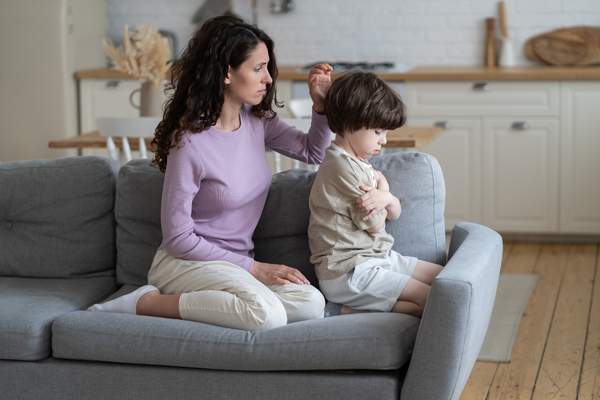
Blended families: What to do when your child doesn’t like your partner
Blended families are now commonplace in the United Kingdom and the traditional 2.4 family unit is in some respects, a thing of the past.
When a new family is formed that includes children from a previous relationship, this is termed a blended family. There is no guidebook that tells you exactly how to do this. For each child and for each family, this can be different. However, just like the story of the tortoise and the hare, it can often be said that ‘slow and steady wins the race.
Introducing significant changes to your child’s life over a short space of time may cause them to have difficulty adjusting to their new blended family. Taking your time with relaxed and short introductions can help your child gradually come to terms with their new reality.
The question is, how do you approach this if your child does not like your new partner? Many parents within blended families can find themselves in this position and time and patience can often be key.
However, there are steps that you can take to support your child and this article aims to explore these steps, alongside products that will aid you on this journey.
Encourage your child to talk about how they are feeling
 Sometimes how your child feels and what specifically they are struggling with isn’t always clear. They may not even know themselves, or if they do, how to express this.
Sometimes how your child feels and what specifically they are struggling with isn’t always clear. They may not even know themselves, or if they do, how to express this.
Bag of Buddies is a great way to encourage your child to talk about how they are feeling.
Covering sadness, anxiety, anger and happiness, these soft and squidgy characters can be used as a tool to have a conversation with your child, without them even having to say a word. Sit down with them and ask them questions about how they are feeling. Be patient and calm and speak with them when there are no distractions and others around. Ask them about how they feel about your new partner and allow them to use the bag of buddies to show how they are feeling. They may use the angry character or the anxious one and that is ok. It is ok for them to have negative feelings and apprehension about the unknown, but it is important that they have this opportunity to express themselves.
The issues that your child is having with your new partner may not be directly related to your partner themselves. Often, a child may worry that the new person in their life is a replacement for their biological parent. Explore this with your child and ask them how they feel about their biological mum or dad not being with them. Again, the answer they give is in some ways not what is important. Whether they use the sad character or the happy character, what is important is you are providing your child with a platform to express how they are feeling. For you as the parent, this delivers insight into how your child is adjusting to their new environment and the key areas that they are struggling with. If they indicate that they are sad about their other parent, reinforce the fact they are still loved by them, that your new partner is not there to replace them and reassure them that they will still see them. Depending on your own personal situation, it may be appropriate to reach out to the other parent and explore the options of them seeing each other and get them on board with reassuring your child that they are still there.
Participate in an activity as a family
If your child appears to not want to engage with your new partner, then sometimes getting out into the great outdoors and working on a task together can be just the thing to facilitate bonding. The Original Den Kit comes with all the equipment needed to build an amazing den.
As the biological parent, take a step back and let your new partner and your child work it out together. If your blended family consists of two separate groups of children, then den building is a great exercise to get them all involved. The original den kit encourages teamwork, supports resilience and aids in developing communication skills. Your blended family will be working in sync with each other without even realising!
What is important here is that the original den kit delivers an opportunity for your new family to work towards a common goal and with that, leads to a sense of achievement once the den is completed.
For additional fun, why not bring marshmallows and if is a safe and appropriate environment, make a bonfire to cook these on? Having fun is key here. Your child will realise that just because their life has changed, it doesn’t mean it can’t change for the better.
Conclusion
Adjusting to a new life with a new family structure can be difficult for many children. The key is to provide your child with the opportunity to speak to you about how they are feeling and to take things slow and steady. Where appropriate, keep the lines of communication open between your child’s biological parents as best as you can so that they are involved in ensuring that your child knows they are still present and around. By listening to your child and following their cues, you will be on the right path for a successful blending of your new family.





